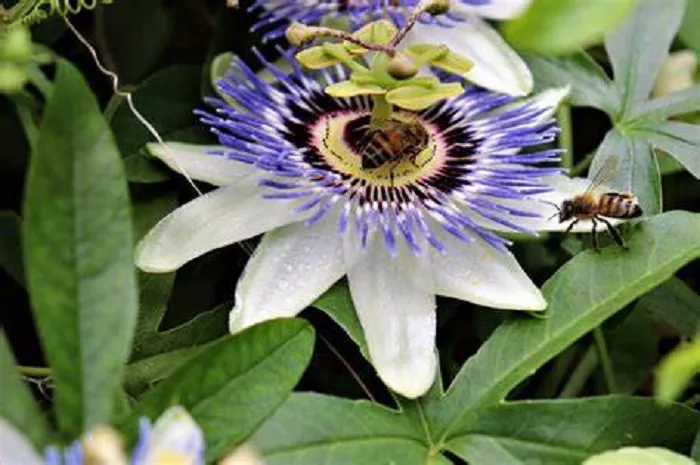Passion fruit vines are not only a delightful addition to any garden with their vibrant flowers and delicious fruits but also a fascinating study in the intricacies of plant reproduction. Pollination is a crucial step in ensuring a bountiful harvest of these exotic fruits. Whether you are a seasoned gardener or a novice with a green thumb, understanding how to effectively pollinate passion fruit flowers can significantly enhance your gardening experience and yield. In this article, we will delve into the art and science of passion fruit pollination, providing you with practical tips and insights to help your vines thrive.
Understanding Passion Fruit Pollination
The Role of Pollinators
In the wild, passion fruit flowers are primarily pollinated by carpenter bees and other large bees. These pollinators are attracted to the flower’s bright colors and sweet nectar. However, in a garden setting, especially in urban areas, the presence of these natural pollinators might be limited. This is where manual pollination comes into play, ensuring that each flower has the best chance to develop into a fruit.
The Anatomy of Passion Fruit Flowers
Before diving into the techniques of pollination, it is essential to understand the structure of passion fruit flowers. Each flower consists of five petals, a central crown of filaments, and a prominent pistil with three stigmas. The stamens, which produce pollen, are located below the stigmas. This unique arrangement often makes it difficult for the pollen to reach the stigmas without assistance, particularly in the absence of strong winds or active pollinators.
When to Pollinate
Timing is Key
The best time to pollinate passion fruit flowers is in the morning when the flowers are fully open and the pollen is most viable. Early morning dew can also help in keeping the pollen grains moist and more likely to stick to the stigmas. Observing your passion fruit vine daily will help you identify when the flowers are ready for pollination.
Identifying Ripe Flowers
Look for flowers that have just opened. The petals should be fully spread out, and the stigmas should be receptive. The color of the stigmas can be an indicator; they are usually a creamy white when ready for pollination. Avoid flowers that are wilted or have started to close, as they are past their prime for successful pollination.
Manual Pollination Techniques
Using a Small Brush
One of the most effective methods for pollinating passion fruit flowers is using a small, soft brush. A clean, dry paintbrush with fine bristles works perfectly. Gently brush the pollen from the anthers onto the stigmas. Be sure to transfer pollen from several flowers to increase genetic diversity and improve fruit set.
Finger Pollination
For those who prefer a more hands-on approach, finger pollination is a viable option. Simply use your fingertip to collect pollen from the anthers and then gently dab it onto the stigmas. Ensure your hands are clean to avoid introducing any contaminants that might harm the flowers.
Cross-Pollination
Cross-pollinating between different passion fruit vines can enhance fruit quality and yield. If you have multiple vines, transfer pollen from one vine to another. This method can introduce new genetic traits, making the plants more resilient and the fruits more flavorful.
Environmental Factors and Pollination
Humidity and Temperature
Environmental conditions play a significant role in the success of pollination. Passion fruit flowers thrive in moderate humidity and temperatures between 65°F and 85°F (18°C to 29°C). Extreme heat or cold can reduce pollen viability and stigma receptivity. Maintaining a stable microclimate around your passion fruit vine can improve pollination outcomes.
Wind and Airflow
While passion fruit flowers are not typically wind-pollinated, a gentle breeze can aid in the dispersal of pollen. Ensure your vine is planted in an area with good airflow but avoid exposing it to strong winds, which can damage the delicate flowers.
Tips for Successful Pollination
Regular Monitoring
Keep a close eye on your passion fruit vine. Regularly inspect the flowers for signs of pollination success, such as the wilting of petals and the swelling of the ovary. This indicates that the flower has been successfully pollinated and is developing into a fruit.
Hygiene Practices
Maintain cleanliness when pollinating. Sterilize your tools between uses to prevent the spread of diseases. This is especially important if you are pollinating multiple plants or have recently dealt with any plant pathogens.
Patience and Persistence
Pollination might not always be successful on the first try. Be patient and persistent. Continue to pollinate new flowers as they bloom, and monitor the vine for fruit development. Over time, you will become more adept at recognizing the signs of successful pollination and can adjust your techniques accordingly.
Common Challenges and Solutions
Pest and Disease Management
Pests and diseases can hinder pollination by damaging flowers or reducing the health of the vine. Regularly inspect your passion fruit vine for signs of pests such as aphids or diseases like powdery mildew. Implement organic pest control methods and ensure proper sanitation to keep your vine healthy.
Insufficient Pollen Transfer
If you notice that flowers are not setting fruit despite your efforts, it might be due to insufficient pollen transfer. Double-check your technique and ensure you are transferring enough pollen to the stigmas. Sometimes, using a slightly damp brush can help in picking up more pollen.
Conclusion
Pollinating passion fruit flowers can be a rewarding and enriching gardening experience. By understanding the anatomy of the flowers, mastering manual pollination techniques, and creating a favorable environment, you can significantly increase your chances of a bountiful harvest. Whether you are a passionate gardener or simply looking to enjoy the fruits of your labor, the art of passion fruit pollination is a skill worth mastering. With patience, practice, and a bit of tender loving care, your passion fruit vine will reward you with its exotic and delicious fruits.


